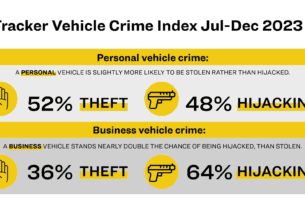Hybrid workforces have become increasingly popular over the last few years, especially with the rise of remote work technologies and lessons learned from the COVID-19 pandemic.
But while numerous studies have shown that most employees love the flexibility of being able to split their time between working in the office and remotely, many business are struggling to deal with the complexities that come with managing a dispersed team.
“While businesses understand the benefits of the hybrid working model, many feel that it has caused their staff to become disengaged with the organisation,” says Nicol Myburgh, Head of the HCM Business Unit as CRS Technologies. “Consequently, their employees lack a shared purpose and sense of unity.”
It takes more than regular online staff meetings or the occasional team building activity to foster employee engagement, he points out.
“What companies need is a solution that empowers them to nurture a dynamic, lively and engaging environment to inspire staff. And if the pandemic has taught us anything, it is that technology, if used strategically, has the potential to significantly enhance vital aspects of the business, including employee engagement.”
Myburgh cites Envolve from CRS Technologies, a cloud-based employee engagement tool built on SCARF (Status, Certainty, Autonomy, Relatedness and Fairness) methodology.
“We used the SCARF model as a framework for Envolve because it is specifically geared to people development and the internal and external resources employees rely on to develop and work to their full potential.”
Status refers to an individual’s relative importance or position within an organisation. “People are sensitive to changes in their perceived status,” Myburgh explains. “A promotion, for example, may increase someone’s status, while criticism or a demotion may decrease it. Envolve enables managers to be aware of how status dynamics can affect their team members’ motivation and behaviour.”
Certainty is about predictability and clarity in one’s environment. “Employees generally feel more comfortable when they know what to expect and what is expected of them. Envolve reduces uncertainty by providing clear job outcomes as well as transparent processes and guidelines.”
Autonomy represents the degree of control individuals have over their environment, particularly their actions and decisions. “Employees can become demotivated if they feel micromanaged,” says Myburgh. “Envolve empowers employees because it is outcomes-based rather than input-driven. In other words, employees are expected to deliver a certain job outcome, but how they achieve it is up to them.”
Relatedness is about connection and a sense of belonging. “Envolve enables employees to see exactly how their particular role in the organisation contributes to its overall success. This fosters a sense of belonging and enhances satisfaction and engagement.”
Fairness reflects an individual’s perception of being treated fairly. “Perceived injustices can lead to frustration and resentment among employees. Envolve promotes transparency at all levels in the organisation by ensuring that responsibilities are distributed fairly. As a result, poor leadership is exposed where applicable and recognition is given where it is due.”
Envolve is the perfect solution for business leaders intent on enhancing employee motivation and improving team dynamics, Myburgh concludes. “The underlying goal is to drive productivity through engagement, clarity around expectations, and transparent real-time reporting on allocated outcomes.
“Not only does Envolve create a more positive and productive work environment, but engaged employees tend to be more committed and loyal to the organisation, which benefits the company’s overall performance and success in the long term.”





